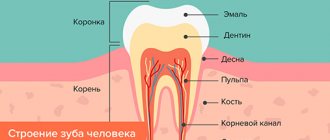Plugs in the palatine tonsils (or tonsils) are purulent accumulations in the lacunae of the tonsils. In medicine you can find other names for this pathology: purulent plugs, caseous plugs.
Most corks are white, but can have a yellow, brown or gray tint, depending on their composition.
Tonsil plugs may be soft to the touch or harder if they contain a large amount of calcium. Their size varies from a few millimeters to a centimeter. Both men and women are equally susceptible to their appearance, regardless of age.
Some patients mistakenly think that this condition does not need to be treated. But this is fundamentally wrong! The presence of purulent accumulations in the palatine tonsils contributes to the development of complications (not only in the upper respiratory tract, but even in the joints, kidneys and heart!).
Why does an accumulation of pus occur in the tonsils? How to treat tonsil plugs? And is it possible to carry out treatment at home? You will find answers to all your questions in our new article.
Tonsil plugs: causes
To find out the etiology of the occurrence of purulent accumulations in the tonsils, you need to understand what role the palatine tonsils play in the body.
The tonsils are an important organ of the human immune system, which is the first to stand in the way of bacteria and viruses that enter the body through the mouth. As soon as “strangers” reach the surface of the tonsils, they begin to intensify the production of leukocytes, which enter into battle with pathogenic microorganisms. As a result of such “battle actions”, dead leukocytes, bacteria, and epithelial remains accumulate in the lacunae of the tonsils. Over time, minerals accumulate here, and the contents of the lacunae begin to harden, forming caseous plugs.
The main cause of traffic jams is chronic tonsillitis. But they can also form in the palatine tonsils for various reasons:
- accumulation of staphylococci, streptococci, pneumococci and other bacteria;
- in people who have a weak immune system;
- frequent sore throats;
- the presence of herpes virus and fungi in the body;
- dental problems (caries);
- viral infections (flu, ARVI).
Each of the above reasons can provoke inflammation of the tonsils. The risk of accumulation of caseous masses in the lacunae of the tonsils is increased by unhealthy diet, smoking, and alcohol consumption.
Traffic jams do not form just like that, for no reason. They are a consequence of another disease and signal that an inflammatory process is underway in the body.
What is tonsillitis?
Tonsillitis is an inflammatory process in the tonsils. The disease can be acute or chronic. The acute form is better known as tonsillitis. In chronic cases, periods of exacerbation (inflammation of the tonsils) are replaced by a period of remission (calm). Most often, the disease occurs in children 5-15 years old, although adults are also susceptible to the disease. The tonsils in children are larger than in adults. The palatine tonsils reach their maximum size by the age of 7, and then begin to shrink. Constant viral attacks on the tonsils lead to tonsillitis. Chronic tonsillitis most often acts as a complication after an infectious disease (sore throat, caries, etc.). The chronic form of the disease, according to statistics, occurs in 5% of adults and 11% of children. That is, chronic tonsillitis is a common disease. Tonsillitis plugs on the tonsils often appear with chronic tonsillitis.
Symptoms
Small accumulations, as a rule, do not cause significant symptoms. With large accumulations, the patient may experience the following symptoms of inflammation:
- bad breath;
- whitish dots are clearly visible on the surface of the tonsils;
- persistent sore throat;
- pain while swallowing;
- body temperature may be increased to 37-37.7 degrees;
- a feeling of discomfort at the site of accumulation of purulent masses;
- swollen tonsils;
- weakness, lethargy, general malaise;
- decreased performance;
- loss of appetite;
- enlarged lymph nodes;
- pain may radiate to the ears.
Traffic jams appear gradually, so in the early stages of the disease the patient experiences only discomfort when swallowing and a sore throat.
This condition is extremely dangerous for pregnant women! In addition to the fact that it has a detrimental effect on the general condition of the expectant mother, it can negatively affect the development of the fetus and, in the worst case, provoke a miscarriage. Therefore, it is extremely important to contact an otolaryngologist in time to receive competent recommendations on how to effectively treat tonsillitis during pregnancy and avoid complications.
Why do traffic jams occur with tonsillitis?
The main factor in the formation of purulent plugs on the tonsils is the constant presence of a focus of inflammation, provoked by viruses. There are always bacteria in the human mouth - they are not dangerous to health. Once in the gaps, they are killed by immune cells. The tonsils of a healthy person are capable of self-cleaning - dead microorganisms are removed from the lacunae and enter the stomach with saliva, where they are destroyed under the influence of gastric juice.
But as soon as dangerous viruses enter the body, a large number of leukocytes are sent to fight them, the mucous membrane of the tonsils swells, and self-cleaning of the lacunae under such conditions becomes difficult. Dead bacteria and leukocytes begin to accumulate in the tonsils - purulent-caseous formations appear. If you do not consult an otolaryngologist in time and do not begin treatment for purulent tonsillitis plugs, the process can become irreversible and lead to the destruction of the tonsils.
Help yourself?
The biggest mistake most patients make is overconfidence that caseous plugs can be removed at home using improvised means. They use a whole arsenal of objects that are absolutely not intended for this: spoons, forks, toothpicks... At best, such amateur activities simply will not bring results, at worst, they will cause injury to the surface of the tonsils and provoke severe bleeding, swelling and inflammation! This will most likely be followed by a sore throat! Plus, if you press incorrectly with a hard object on the accumulation of pus, you can push it even further into the thickness of the tonsil.
Some people try to gargle, believing that gargling will bring relief. Yes, the feeling of discomfort in the throat temporarily passes, but the accumulations of pustules do not disappear, because the rinsing solution comes into contact only with the surface of the tonsils, and getting inside it is extremely problematic, or rather, impossible. Therefore, this method is also not effective.
The best method to get rid of traffic jams is to consult an otolaryngologist!
Purulent formations and chronic tonsillitis
In the chronic form of the disease, inflammation in the tonsils does not completely disappear, but only subsides for a while. Bacteria are always present in the lacunae of the tonsils, and the increased formation of a large number of leukocytes does not stop. Since the chronic form is characterized by the absence of pronounced signs of the disease, the appearance of purulent plugs goes unnoticed by the patient. White blood cells surround the bacteria, and a purulent formation appears. Over time, substances containing calcium and magnesium accumulate in them. As a result, the plugs harden.
Among the reasons for the formation of traffic jams are:
- diseases of the nasal cavity that are chronic (for example, sinusitis) - some of the bacteria from the nose certainly gets into the throat;
- lack of proper oral hygiene - here bacteria are constantly present and when immunity decreases, they enter the tonsils; food debris can also get stuck in the gaps and become “material” for the hardening of purulent masses;
- weak immunity - a person is unable to cope with the infection on his own, and the disease becomes protracted or chronic;
- damage to the tonsils - infection can easily get into the wound. Often it is the site of injury that becomes the location of a new purulent formation.
Possible complications
As already mentioned, the presence of clusters of caseous masses is not as harmless as it might seem at first glance. The danger of this condition is that pathogenic microflora from the lacunae of the tonsils can spread to other organs beyond the tonsils and provoke various kinds of complications:
- Peritonsillar abscess of tissue around the tonsils. A severe inflammatory process starts in the tissues around the tonsils. A patient with this condition experiences a sore throat. He can't help but feel like there's a foreign object stuck in his throat. There are difficulties with swallowing and wide opening of the mouth (trismus of the masticatory muscles). Periodically, the patient has a fever, and other unpleasant symptoms of intoxication of the body appear. In this case, only opening the peritonsillar abscess, sometimes with the simultaneous removal of the tonsils (abscessonsillectomy), will help improve the patient's condition.
- Cervical phlegmon is an infection of the tissue of the neck. The patient experiences severe pain at the site of inflammation, and the body temperature rises to 40°C. The danger is that a purulent infection can enter the blood and cause sepsis and purulent damage to other organs. The abscess can also descend into the mediastinum - the case where our heart is located. This inflammation is called mediastinitis. This is a disease with an extremely high mortality rate!
- Sepsis (blood poisoning), caused by infection in the blood. This condition is extremely dangerous for humans and requires urgent hospitalization.
- Kidney diseases.
- Joint diseases.
- Heart diseases.
Causes of chronic tonsillitis
The chronic form of tonsillitis often develops as a complication after a sore throat. Many patients try to cure a sore throat on their own and take medications uncontrollably. Some, having received doctor’s recommendations, do not follow the instructions and finish the course of taking antibacterial drugs earlier than expected, noticing an improvement. This is a huge mistake! Untreated sore throat causes the disease to enter the chronic stage and the formation of tonsillitis with purulent plugs. The main causative agents of the disease are streptococci and staphylococci.
Exacerbation of tonsillitis is favored by:
- chronic inflammatory process (sinusitis, caries, sinusitis, etc.);
- proliferation of adenoids;
- deviated nasal septum;
- damage to the tonsils;
- hypothermia;
- weak immunity.
Treatment of tonsil plugs
When contacting an ENT doctor, the patient is offered conservative treatment, which includes washing the tonsils, physiotherapeutic procedures and drug therapy.
There are two methods of rinsing: removing pus with a syringe and hardware rinsing. The method using a syringe is used much less frequently if the patient has a strong gag reflex. The most effective method is to wash the tonsils using a vacuum method using the Tonsillor apparatus. In our ENT clinic, we use a special vacuum attachment for this, which has no analogues today! With the help of this attachment, it is possible to effectively and painlessly wash the entire contents of the lacunae of the tonsils, and improve the patient’s condition after the first session.
Conservative method of removing tonsillitis plugs
Conservative treatment consists of:
- Treatment with medications (antibiotics and the duration of treatment is prescribed directly by the ENT doctor. Treatment of chronic tonsillitis should begin at the time of exacerbation, not remission. As a rule, the patient is prescribed the drugs “Amoxicillin”, “Amoxiclav”, “Summamed”, “Azithromycin”, etc. .).
- Gargling (solutions of furatsilin, soda, decoctions of chamomile, St. John's wort, string, from pharmaceutical products - Miramistin, Rotokan, etc. are excellent).
- Inhalations (as agreed with the doctor).
- Rinsing the lacunae of the tonsils (the most effective method for removing purulent accumulations. Performed only by an otolaryngologist. Rinsing is carried out using a syringe or a TONZILLOR device.
When carrying out a course of rinsing, the patient's condition significantly improves, the tonsils look healthier, and are cleared of purulent accumulations.
With chronic tonsillitis, the period of remission of the disease increases.
How to treat white lumps in the throat
A small number of white dots on the tonsils indicates chronic tonsillitis. In order to avoid the occurrence of putrid odor from the mouth and the “growth” of plaques, it is necessary to undergo a set of procedures prescribed by an ENT doctor twice a year. Paying attention to your health will help you avoid serious complications.
The method of relieving the disease entirely depends on the cause of the appearance of white balls on the tonsils. For example, if we are talking about infection of the tonsils with bacteria, then the disease cannot be cured without taking antibiotics.
To determine which antibacterial medicine will be the most effective, it is necessary to undergo an analysis of the resistance of the pathogen to different groups of agents. That is why you cannot independently choose a drug for treatment, as well as determine the dosage. This should be done exclusively by an ENT doctor.
Drug therapy
Depending on the results of laboratory tests, the patient is prescribed one of the following drugs:
- Clarithromycin.
- Amoxicillin.
- Cefoperazone.
- Augmentin.
To treat an advanced disease, several drugs that have an antibacterial effect may be prescribed at once.
To effectively get rid of white lumps that appear on the tonsils due to chronic tonsillitis, it is necessary to combine antibiotics with the following drugs:
- Products with a disinfecting effect. The most popular are Chlorhexidine and Dioxidine. You can also rinse your mouth with herbal infusions (sage, chamomile).
- During the period of exacerbation of the chronic form of the disease, the doctor prescribes anti-inflammatory drugs: Panadol, Nurofen. Sometimes doctors advise taking homeopathic remedies. The most popular - Tonsilton - has no side effects and is recommended for the treatment of tonsillitis in children.
- Taking vitamin complexes. The inflammatory process affects the entire body, but the immune system is particularly damaged. To get rid of dizziness, poor health and improve the functioning of the immune system, you need to diversify your diet and take vitamins, the composition of which is replete with basic micro and macroelements, useful substances necessary for the normal functioning of all organs and systems.
Physiotherapeutic treatments
In addition to taking medications and gargling, it is recommended to undergo a course of physiotherapeutic procedures. Their type and duration are determined by the attending ENT doctor. The following types of physiotherapy are distinguished:
- ultrasonic;
- microwave therapy;
- UHF;
- laser irradiation.
Local therapy
Washing the tonsils
Quite often, experts prescribe medications for resorption (Septolete or Hexalize) and recommend taking a course of procedures for washing the lacunae of the tonsils. This manipulation is extremely difficult to do at home without experience, so it is better to take a course from a doctor.
Traditionally, the otolaryngologist prescribes 10–15 procedures; for rinsing, the specialist uses a copper-silver solution, which has a disinfecting effect.
In advanced forms of tonsillitis, even after several courses of traditional drug treatment, lumps with or without pus continue to appear on the tonsils. For some patients, the doctor may suggest removal of the tonsils. After a surgical procedure called tonsillectomy, the patient will no longer be bothered by tonsil plugs.
Why do they appear?
There are several reasons for the appearance of cysts in the throat. For example, they can be genetically determined, and can often manifest themselves after a generation, notes Vladimir Zaitsev. Another point is problems with nasal breathing. “If it is absent, then the pharynx does not receive enough oxygen, a state of hypoxia develops, and the risk of developing cysts and polyps increases. Also, the reason may lie in the anatomical structure of the skull, when it develops atypically, which leads to a tendency to hypoxia of the nasopharynx. For example, when the soft palate sticks to the back wall of the pharynx and does not allow the nasopharynx to ventilate fully, this is also a precedent for the formation of tumors,” says the doctor.
“I believe cancer is contagious.” Oncologist - about the causes of this terrible disease Read more
Other formations
In addition to cysts and papillomas, there may be other benign formations in the throat that cause discomfort. These may include adenoid vegetations, otherwise called benign adenoid hyperplasia, Thornwaldt's disease.
Treatment is usually surgical. If the cyst is large, it is removed and cleaned, it is completely enucleated. If the brush is small, there are two methods. One is with the help of a laser, when the tissue is evaporated. The second is with the help of cryotherapy, when the tissue is burned, a scab is formed, which later falls off as a scab.
Surgery
Tonsillectomy - removal of the tonsils - is the most radical way to get rid of the problem. It is used in the most extreme cases, when conservative methods do not bring the desired relief, and the indications for surgery must be quite serious. Before removing tonsils, you need to carefully weigh everything and first try a full range of conservative treatment measures. By removing the tonsils, you are deprived of a natural natural barrier against viruses and infections. You need to fight to preserve your tonsils to the last!
Tonsils are removed using a scalpel, laser or liquid nitrogen. Your ENT doctor will definitely tell you about all the intricacies and consequences of tonsillectomy.
Worrying about a cyst
“Some people are very afraid of cysts, believing that they are the same as cancer. Not everything is so simple here. Yes, one of the bad things that can be distinguished is that this is still a formation, which means that plus excess tissue means that something was not normal before, but has now appeared. The good thing is that such cysts rarely become malignant, that is, the chances that it will become cancer tend to zero,” notes the ENT specialist.
At the same time, Vladimir Zaitsev also says that against the background of such data, the cyst should not be ignored. “If you don’t treat the cyst, but come to terms with it and get used to it, then you can lead to polycystic disease, when yesterday there was one cyst, today there are two, and tomorrow a third will appear,” explains the doctor.
There should be no self-medication; there is a risk of worsening the situation with your own hands. For example, polycystic disease can develop even if a person himself decides to remove the formation. “If the cyst is removed incorrectly, for example, it is simply opened, as a result of which the cystic fluid comes out, but the membrane is preserved, then the following will happen: the membrane will collapse, the cyst will lose its tone, then it will stick into the tissue, a bridge will develop, and two cysts will appear in one place.” , notes the ENT. At the same time, you cannot climb into your throat either with improvised means or with small scalpels, which can be purchased at the same pharmacy.
Choking and skin problems. What are the consequences of the papilloma virus besides cancer? Read more
Diagnostics
To identify the cause of the appearance of white formations, to establish the strain and type of pathogenic microorganisms, it is necessary to undergo a full examination.
Basic diagnostic methods:
- microscopic, bacteriological, bacterioscopic analysis of a throat smear - carried out to identify the type of pathogen;
- general blood test - inflammation is indicated by an increase or decrease in the level of leukocytes, an increase in ESR;
- PCR diagnostics, ELISA - allows you to detect the presence of antibodies to various bacteria in the blood;
- pharyngoscopy;
- ECG - carried out to assess the functioning of the heart.
All tests must be taken in the morning; before the procedures you cannot eat, drink, or brush your teeth.
To identify the causes of lumps in the throat, a throat swab is used
Are whitish lumps dangerous and why?
Whitish dots or lumps on the mucous membranes of the throat and tonsils indicate the presence of an inflammatory process. If you ignore such a serious problem, there is a high probability of intoxication of the entire body.
In the process of fighting the causative agent of the disease (virus, bacteria), the body’s immune-protective functions will weaken, which can lead to undesirable consequences:
- the occurrence of pain in muscles and joints, which sometimes develop into more serious conditions (rheumatism);
- disturbances in the functioning of the cardiovascular system (arrhythmias and tachycardia);
- kidney damage;
- Allergic reactions may occur.
Hard lumps on the tonsils are formed due to an inflammatory process, the causative agent of which can spread throughout the body. Therefore, if formations are detected in the expectant mother, she should immediately contact a specialist - the disease can pose a serious danger to the fetus.
After ARVI in a child
Children suffer from acute respiratory viral diseases quite often. This is due to:
- immaturity of the child’s immune defense mechanisms;
- high crowding in children's groups.
Sometimes after an acute respiratory viral infection, white dots or spots are found on the child’s tonsils, enlargement, swelling of the tonsils, and redness of the palatine arches. This indicates the addition of a bacterial infection and the development of a sore throat. In this case, you should immediately seek medical help.
Timely and correct treatment of sore throat will protect the child’s body from complications.
A white coating may appear on the child’s tonsils without fever. This happens when oral thrush occurs. Thrush is a fungal disease caused by pathogenic fungi of the genus Candida. Candidiasis often develops during antibiotic treatment. The diagnosis is made based on examining a smear from the tonsil under a microscope. Specific antifungal drugs are used in treatment.
Traditional medicine and preventive measures
Treatment with folk remedies for removing accumulated pus is not entirely effective - plugs located deep in the tonsil cannot be removed. With their help, you can only soften the surface of the plugs to facilitate their rejection and use herbal decoctions when gargling and disinfecting it.
To reduce the risk of traffic jams, you need to follow some simple tips:
- carefully monitor oral hygiene;
- treat sore throat and inflammation in the nose and mouth in a timely manner: sinusitis, frontal sinusitis, caries, stomatitis;
- avoid hypothermia;
- for chronic tonsillitis, follow the recommendations of your ENT doctor, do not forget about preventive complexes of physiotherapy and tonsil rinsing;
- Strengthen your immune system and try to lead a healthy lifestyle.










